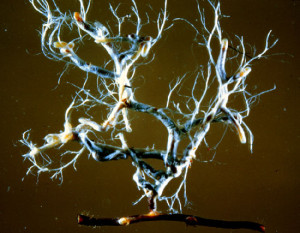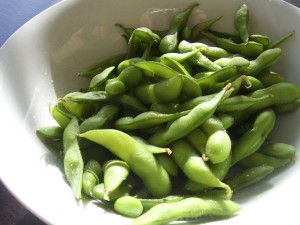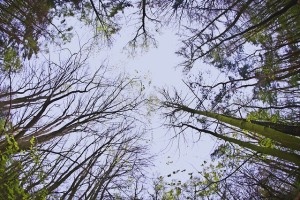Traditionally, plant ecologists seeking to better understand plant communities looked up (at light availability or precipitation patterns), across the landscape (at elevation or topography), and down (at leaf litter depth or soil moisture). More recently, however, they’re starting to look below.
Below the surface of the soil lies an entire complex web of strange organisms, alien-like in their body forms and behaviors, many of whom are reliant on the roots of plants for shelter or food. This whole other sub-world is likely responsible for many of the patterns observed in plant communities, but the job of a soil ecologist is merciless, involving equal-parts complexity and mystery.
If only we could place shrunken researchers into tiny deep-sea-like vessels and float around in the water surrounding soil particles, we could directly observe the interactions occurring among increasingly tinier scales: plants, earthworms, insects, nematodes, protozoa, fungi, bacteria, and viruses – the combination of interactions is truly incomprehensible, and soil ecologists are only at the tip of the iceberg in terms of understanding these relationships. So what do they know right now?

1. There is an internet-like system of fungal hyphae belowground that enables plants to share resources and communicate with one another. These networks of fungal hyphae – branching threads that promote the growth and reproduction of the fungus – connect the roots of plants in complex, interconnected webs, often between individuals of very different ages, and sometimes between different plant species. About 90% of land plants are associated with these beneficial fungi, called mycorrhizae. Nutrients and water are transported through these hyphal highways, moving from areas where resources are high to areas where resources are low. “Top-earning” plants, accumulating large nutrient reserves, are forced by these hyphae to perform seemingly altruistic acts in a socialist society, and their nutrients are re-allocated to seedlings and other plants struggling to gain resources. Besides nutrient- and water-shunting abilities, mycorrhizal networks have also been attributed to helping plants avoid pathogen infection, transporting chemicals to prevent the establishment of competitor plants, and warning nearby plants of drought conditions or of herbivore presence. This “wood wide web” can be thought of as a resource and information highway connecting plants, causing plant ecologists to rethink the concept of each plant as being an individual competing with their neighbors for the same resources.

2. Bacteria living in the roots of certain plants can fix nitrogen from the atmosphere and give it to the plants in return for compounds that the plants make through photosynthesis. Nitrogen-fixing bacteria living in the roots of certain plant species provides one of the most important and limiting resources in temperate forests. Why is nitrogen limiting, you ask? Our atmosphere is made up of around 79% N2 gas! The chemical bond between the N atoms is very strong, rendering it practically unreactive. Very few species have evolved the ability to transform N2 into a form usable by plants. When a mutualism forms between a plant and a nitrogen-fixing bacteria, the plant reaps the benefits of extra nitrogen, and the bacteria profits from the more stable environment within plant roots. Here’s to a mutualism we can thank for creating some of our favorite foods: soy, peas, beans, peanuts, and rooibos.

3. Pathogens in the soil do not exist homogeneously across the landscape. They may aggregate in areas where they have plenty of fodder upon which to feed. What is fodder for a soil pathogen? Oftentimes, plant roots, stems, and leaves. At first glance, this may seem like a bad situation for plants. However we may be able to thank soil pathogens (and other plant enemies) for the great diversity of tree species. Specialist pathogens may only be able to infect one tree species. This pathogen accumulates under the canopy of that species, and that species only. As the mature tree disperses seeds, some land under the canopy of the adult, and others get dispersed farther away (via wind, squirrels, birds, you name it). Which seeds do you think will be most successful? Those that disperse farther away from the adult from which they came. If they fall under the canopy of a different species, the pathogens there won’t be able to infect the new seed, and it’s more likely to germinate and grow. This spatial “over-dispersion” of seedlings, particularly in tropical forests, may be why we see co-existence of so many different species in the same location. Termed the “Janzen-Connell effect,” this theory has been posited not only to explain high diversity in forests, but also to explain why some species are common and others rare, and why invasive plant species are so successful. And to think this is all because of microscopic soil creatures!
Peer edited by Diamond Ebanks
Follow us on social media and never miss a [article type] article:
This article was co-published on the TIBBS Bioscience Blog.